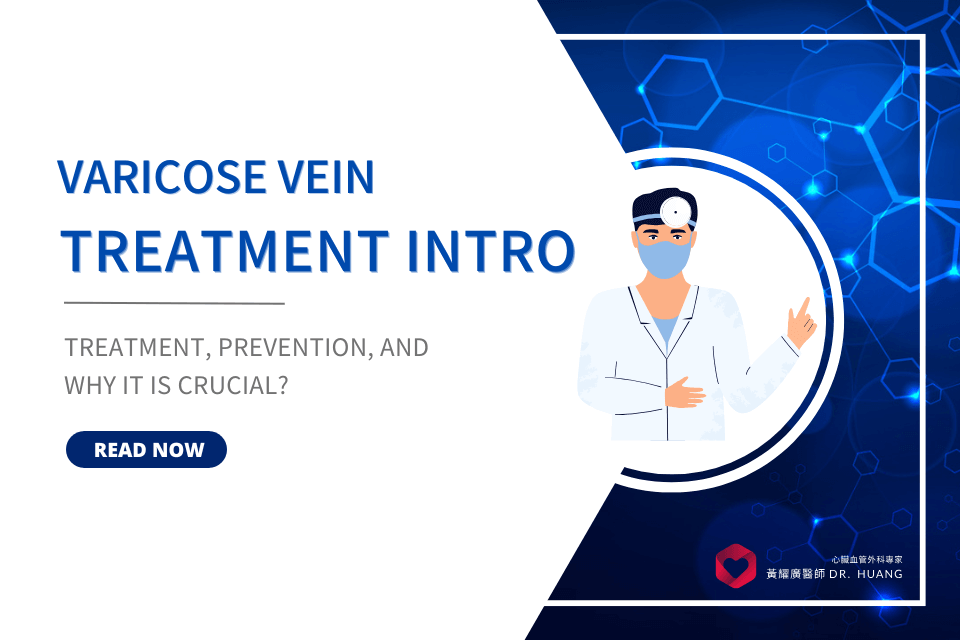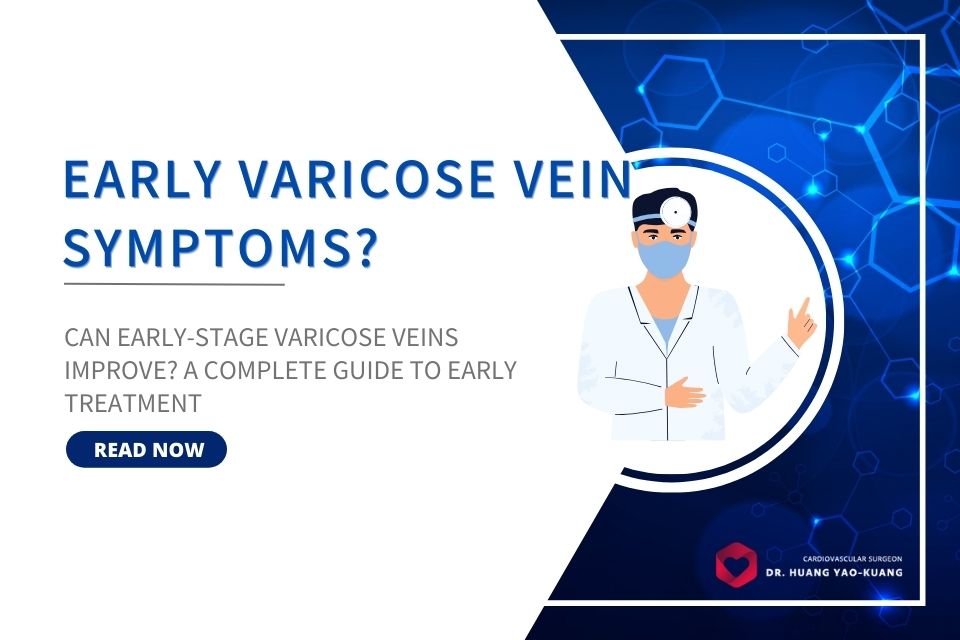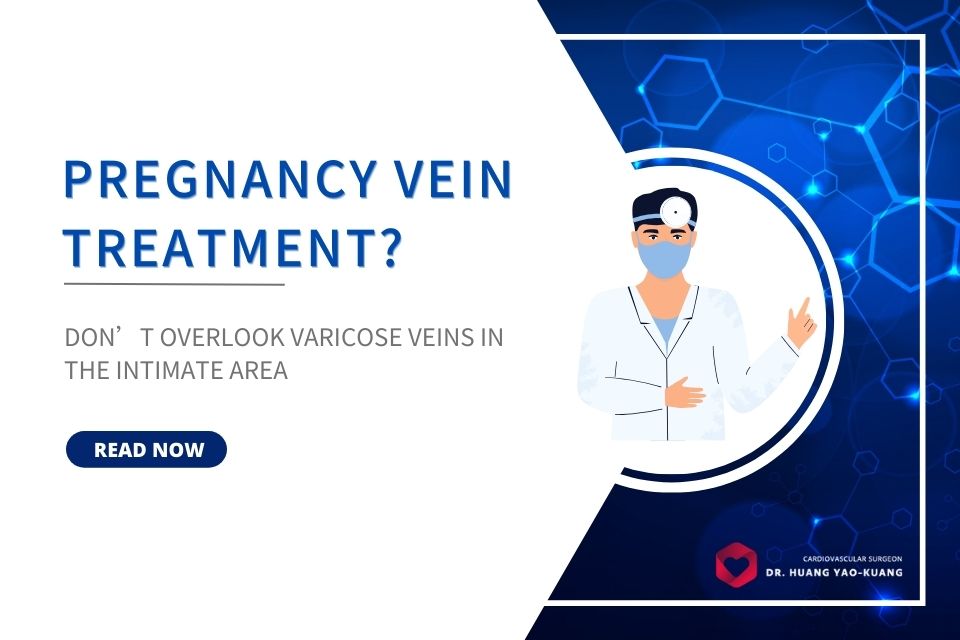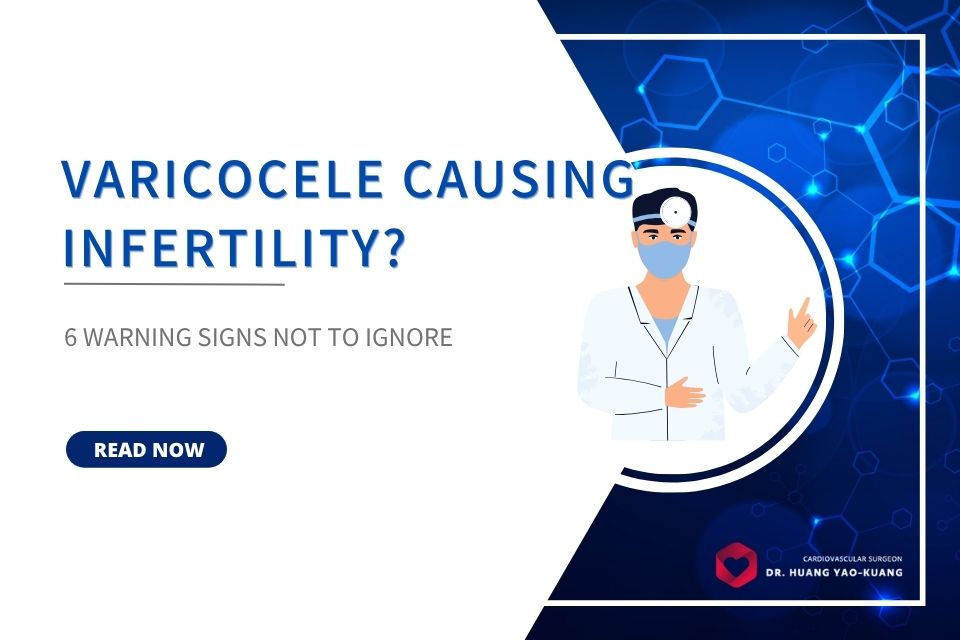
Varicose Vein: Treatment, Prevention, and Why It’s Crucial
Varicose Vein: Treatment, Prevention, and Why It’s Crucial
Varicose veins in the lower limbs are a common venous system disorder, often seen in individuals who stand or sit for prolonged periods, frequently wear high heels, or maintain poor posture.
Over time, patients may notice symptoms such as swelling, a feeling of heaviness, cramps, and a dull ache in their lower legs.
These symptoms can cause significant inconvenience in daily life.
This article will introduce methods for improving varicose veins and answer some frequently asked questions from online communities like PTT regarding the condition.
Quick Overview of Varicose Vein
Seven Causes of Varicose Veins
Is improving varicose veins easy?
Varicose veins typically occur when blood is unable to flow back effectively to the heart.
When pressure in the lower limbs becomes too high, the vein walls stretch and lose elasticity, causing the valve function to weaken.
This results in blood flowing backward, leading to blood pooling in the feet, which may cause the skin to develop dark purple or brown discoloration.
In the early stages, symptoms may not be very noticeable, but over time, they tend to become more pronounced. Some common symptoms include:
- Twisted veins: Visible swelling and twisting of veins just beneath the skin, often appearing blue or purple.
This is typically seen in the calves or thighs, although some cases may appear around the groin area. - Swelling and heaviness: Swelling in the calves or feet, particularly after standing or sitting for long periods, accompanied by a heavy and tired feeling in the legs.
- Tingling or burning sensation: A sensation of tingling, burning, itching, or pain in the lower limbs.
- Cramps and discomfort: Nighttime cramps or aching pain, which may even affect sleep, causing frequent waking.
- Pigmentation or ulcers: The skin may show signs of pigmentation or ulcers, sometimes accompanied by cellulitis (skin infection).
- Phlebitis: Inflammation of the veins (blood clots within the veins), with symptoms such as redness, swelling, warmth, and pain.
- Bleeding due to venous changes: Decreased skin strength from venous changes can lead to venous bleeding.
When varicose veins become too severe, it becomes much more difficult to improve the condition.
If a patient hopes to effectively address varicose veins, it is recommended to promptly schedule an appointment with a cardiovascular specialist.
Dr. Huang will conduct a thorough evaluation and develop a personalized treatment plan to restore your quality of life.
Get Expert Cardiovascular Advice Now
Expert Surgeons for Comprehensive Cardiovascular Treatment!
Instant Online Consultation Available
Clarifying Varicose Vein Classification
When evaluating varicose veins, the most used classification system by physicians is the CEAP classification, which stands for:
- Clinical (C): Clinical staging of the condition
- Etiology (E): Cause or origin of the condition
- Anatomy (A): Location of the affected veins
- Pathophysiology (P): Mechanisms or underlying processes involved in disease
The Clinical (C) staging ranges from C1 to C6, indicating the severity of varicose veins from mild to severe, which helps physicians assess the patient's condition:
| Clinical Stage (C) | Description |
|---|---|
| C1 | Telangiectasia (spider veins) or reticular vein dilation (small, visible veins) |
| C2 | Visible varicose veins (bulging, twisted veins) |
| C3 | Lower limb edema (swelling) |
| C4a | Skin discoloration or eczema |
| C4b | Lipodermatosclerosis (skin and fat hardening) and atrophie blanche (white scar-like lesions) |
| C5 | Skin discoloration with healed skin ulcers |
| C6 | Severe, non-healing skin ulcers |
Etiology (E) Classification
The etiology of varicose veins is typically primary:
| Etiology (E) | Description |
|---|---|
| Ec | Congenital (present from birth) |
| Es | Secondary (caused by other conditions) |
| Ep | Primary (no obvious underlying cause) |
| En | No venous etiology identified (cause unclear) |
Anatomy (A) Classification
The classification based on the location of the affected veins:
| Anatomy (A) | Description |
|---|---|
| As | Superficial veins (near the skin's surface) |
| Ad | Deep veins (located deeper in the legs) |
| Ap | Perforator veins (connecting superficial and deep veins) |
| An | No venous location identified (unclear location of affected veins) |
Pathophysiology (P) Classification
This category describes the underlying mechanisms:
| Pathophysiology (P) | Description |
|---|---|
| Pr | Reflux (blood flow in the wrong direction) |
| Po | Obstruction (blockage of veins) |
The CEAP classification is the most widely used system and continues to be updated over time.
Get Expert Cardiovascular Advice Now
Expert Surgeons for Comprehensive Cardiovascular Treatment!
Instant Online Consultation Available
Who Needs Treatment for Varicose Veins?
- Family history of varicose veins: Varicose veins are often hereditary, those with a family history of varicose veins are at higher risk.
- Older adults: Aging leads to weakened vein valves, increasing the risk of reflux and varicose veins.
- Pregnant or overweight individuals: Extra weight puts more pressure on the lower limbs, straining the veins.
- Smokers: Nicotine constricts blood vessels and damages vein walls.
- Those with prolonged standing or sitting: Long hours in a fixed position increase pressure on the veins in the legs.
How to Treat Varicose Veins? Doctor's Advice
Do varicose veins go away? Can exercise improve varicose veins? Which specialist should I see for varicose veins?
Today, Dr. Huang will explain the answers, let’s dive in!
C1 and C2 patients (early stages)
Non-surgical treatments may be effective, including:
- Improving work habits to reduce strain on the legs
- Wearing appropriate compression stockings to support vein function
- Applying topical creams for symptom relief
- Using specific medications to help manage symptoms
- Sclerotherapy (injection of a solution to close veins) or vein removal for localized veins
C3 or higher patients (more advanced stages)
When the superficial veins are malfunctioning and causing issues, minimally invasive surgery should be considered to treat the veins effectively.
For every patient with leg varicose veins, we first perform an ultrasound evaluation before treatment.
If the patient requires minimally invasive surgery for vein disease, we arrange a self-paid non-toxic full venous MRI as a preoperative check for three main reasons:
- Identify concurrent pelvic issues such as pelvic congestion syndrome, iliac vein compression, or other congenital venous abnormalities.
- Confirm the surgery target (typically the great and small saphenous veins) and check for any additional superficial veins (accessory saphenous veins).
This also helps locate surface branches that may affect cosmetic outcomes, and ensures the deep veins are intact so that damaged superficial veins can be properly closed. - If surgical results are not as expected, follow-up imaging can assess for recurrence.
Varicose Vein Treatment: Common Surgeries
Traditional Surgery: Vein Stripping
This involves making small incisions on the leg to remove the affected vein.
However, with advancements in technology, vein stripping is no longer the first-line treatment unless other methods are not suitable.
Laser or Radiofrequency (Energy Closure)
This method heats the vein from inside to seal it.
Physical Closure (Cold Closure)
Commonly referred to as "sealing," the most widely used system is the Venaseal Closure System (vein glue).
A comparison of different methods:
| Method | Traditional | Laser Closure (EVLT) | Venaseal (Vein Glue) |
|---|---|---|---|
| Anesthesia | General anesthesia | Optional | Optional |
| Post-surgery pain | Significant | Mild | Minimal |
| Complications | Common (bleeding, numbness, bruising, infection) | Rare (bruising, ankle numbness) | Rare (allergic reactions) |
| Return to work | 1-2 months | 2 weeks | 3 days |
| Surgical cost | Covered by insurance | NT$60,000-80,000 | NT$100,000-120,000 |
| Material&technique costs | NT$100,000-120,000 | NT$100,000-120,000 | NT$100,000-120,000 |
| Compression stockings | 6 months post-surgery | 1-3 months | May be required (depending on individual condition) |
Each patient has unique needs for varicose vein treatment.
It is recommended to discuss thoroughly with a doctor to determine the most suitable method for relief.
Get Expert Cardiovascular Advice Now
Expert Surgeons for Comprehensive Cardiovascular Treatment!
Instant Online Consultation Available
Varicose Vein Treatment: What is Superficial Vein Intervention?
A common treatment for varicose veins is minimally invasive surgery, which involves closing or removing the affected superficial veins in the legs, allowing blood to flow through the healthy deep veins back to the heart.
One common question patients often ask is:
"If my leg veins are removed, won’t I be left without veins? What if I need to use them for heart surgery later?"
The surgeon will only close the superficial veins (such as the great saphenous vein) that have damaged valves and are causing blood to flow backward.
The blood will then be redirected through the healthy deep veins. Before surgery, we use non-toxic full-vein MRI to confirm that the deep veins are intact and blood is flowing properly to the heart, ensuring that the procedure can be safely performed.
4 Expert Tips to Improve Varicose Veins Without Surgery
Mild cases of varicose veins can be relieved through the following methods:
Maintain Regular Exercise
Exercise can effectively promote blood circulation and reduce pressure on the leg veins.
It is recommended to raise your legs above heart level for 10-15 minutes before bed to help blood flow back to the heart.
Control Your Weight
Maintaining a healthy weight helps reduce pressure on the legs, alleviating varicose veins.
Be Mindful of Your Posture
Maintain good posture and avoid habits like crossing your legs.
Additionally, avoid excessive alcohol consumption, staying up late, or smoking, as these factors can worsen varicose veins.
Wear Compression Stockings
If your job requires prolonged sitting or standing, consult your doctor about wearing compression stockings to prevent varicose veins from worsening.
Get Expert Cardiovascular Advice Now
Expert Surgeons for Comprehensive Cardiovascular Treatment!
Instant Online Consultation Available
Varicose Vein Treatment and Prevention Matters
If left untreated, varicose veins can become severe and even life-threatening, so it's important not to ignore any warning signs.
While varicose veins are common, proper preventive measures can significantly reduce the risk.
Wearing compression stockings, exercising regularly, controlling weight, and maintaining good posture and healthy lifestyle habits are all effective ways to prevent varicose veins.
For those with severe varicose vein issues, early treatment is crucial to prevent further complications and improve quality of life.
If you have any concerns about varicose veins, feel free to consult Dr. Huang at the Cardiovascular Surgery Department!
Get Expert Cardiovascular Advice Now
Expert Surgeons for Comprehensive Cardiovascular Treatment!
Instant Online Consultation Available


